Arlington Garden
Sometimes you need a break from the 210 or the 134 and you decide to pull off into Pasadena seeking a respite from the traffic and chaos of urban congestion. That place is the 3-acre Arlington Garden oasis located at 275 Arlington Dr in Pasadena. Free parking is curbside on Arlington Drive or on nearby residential streets. This free public garden (the only one in Pasadena) contains a number of short pathways winding through a variety of Mediterranean vegetation.
This site used to house the Durand Mansion (one of the finest homes of its era along what was known as Pasadena’s Millionaires Row. Later this land was used to store construction equipment for the 710 freeway expansion in the mid 1960’s. The garden is more recent; it dates from 2005 when the first plants were introduced here. The focus is on plants that are drought resistent – vegetation that aren’t highly water dependent.
Visitors who enter from the Pasadena Drive side will do so through a small grove of citrus trees. Highlights include the silence – which when accompanied by one of the benches creates an idylic setting for whittling away an hour or more with a good book. Other highlights are the Arlington Garden Labyrinth and the massive ‘pepper’ tree next to it (the largest pepper tree we have ever seen).
Open daily year round during daylight hours. For more information, visit: www.arlingtongardenpasadena.com
Descanso Gardens
160 acres of gardens are tucked away between the intersection of the 2 and the 210 freeways in La Canada Flintridge. Signs to the Descanso Gardens (meaning ‘place of rest’ in Spanish) are well marked from either freeway. Exit Verdugo Blvd from the 2 north – this blvd is incidentally named after Corporal Jose Maria Verdugo whose property where the gardens are now located was in his family for more then 100 years after he received some 36,000 acres as part of a land deed in 1769.
Forward many decades to 1937 when 160 acres were purchased by Manchester and Berenice Boddy purchased the property and built the Boddy House – 22 rooms spread out over approximately 12,000 square feet. Visitors to the gardens can also make the walk up the hill to this house and when the house is open, take a self guided tour of the interior (the home was beautifully restored in 2007).
The gardens are spread out over the original 160 acres that the Boddy’s purchased and include a diversity of foliage including arguably the highlight of any visit here, the Camellia Forest. During WWII when Japanese living in the USA including in Los Angeles were moved to internment camps (Manzanar) the Boddy’s purchased upwards of 100,000 camellias from several of his Japanese friends who owned nurseries. Today this is the largest camellia collection in the world. Depending on the variety, camellias in Los Angeles will bloom between September and March with the height of the bloom coming in late February.
Other highlights include a Japanese Garden, the Rose Garden with more then 3,000 rose bushes – a spectacular Lilac Garden (come in early to mid spring for optimal viewing) and a California natives section.
The Enchanted Forest of Light is a seasonal event that is extremely popular (tickets sell out fast and must be purchased ahead of time) where part of the gardens are lit with a sea of lights. Features a mile of walking paths lined with hundreds of lights. Plenty of free parking is on site. For more information about the gardens, visit: www.descansogardens.org
Earl Miller Burns Japanese Garden
is one of the smallest open to the public botanical gardens in Los Angeles. Opened in 1981 it is named after Earl Burns Miller – husband of Loraine Miller Collins (who financially and generously supported the development of the garden). If the weather is good on the weekends, this 1.3 acre site often is the busiest on Sunday afternoons.The site is located on the campus of California State University Long Beach. Parking is in the lot directly across from the main entrance. Parking is metered and enforced seven days a week – we have been here several times and have only noticed on parking ticket machine located at the entrance to the parking lot. As a result, during busy times, there is often a short line in front of this automated ticket machine.
Designed by Edward Lovell – who visited Japan and other Japanese gardens within the USA before doing the layout of this garden. The centerpiece of the garden is a pond which takes up much of the real estate in the garden – it is surrounded by a walking path with several wooden bridges leading over the edges of the pond. As you enter, notice the giant orange koi fish swimming languidly on the edges of the pond. Often a small packet of free fish food will be included with the price of admission.
Closed Monday Saturdays. A sought after wedding venue as well as a photography space. Popular with students – especially on Sundays as admission is free for students.
Gardens of the World
is located in Thousand Oaks at 2001 E Thousand Oaks Blvd – a few minutes drive from the 101 Freeway. They are open Tuesday through Sunday from 9am to 5pm. One can enter on foot through a tall gate in the fence from Thousand Oaks Blvd or one can drive and park in their small parking at the end of their driveway. They feature an overt no photo policy requesting anyone taking photos to check in with staff or get a permit. No Walking on Grass signs are annoyingly scattered around the grounds and detract from the overall experience. The elderly staff are quick to reprimand you even if you barely step on the grass – and signs indicate the entire gardens are being monitored 24/7. In this regard, it is not a very welcoming atmosphere.
Gardens of the world was created by Ed and Lynn Hogan, founders of Pleasant Holidays to showcase some of the vegetation and gardens they have seen on their travels. Their small property (4.5 acres) features a variety of styles including French, Japanese, Italian & English. The Mission Courtyard is located on the lower half of the gardens and features an open-air courtyard with hand painted murals of all of California’s 21 missions. It only takes maybe 20-30 minutes to walk and visually absorb the gardens on a self guided tour (brochure available at both entrances). For more information visit: www.gardensoftheworld.info
Huntington Library, Art Collections and Botanical Gardens
in San Marino (1151 Oxford Road) is a must visit during your trip to Los Angeles. From downtown Los Angeles take the 110 (Harbor Freeway) north which turns into Arroyo Seco Blvd – then turn right on California and follow the signs to the entrance. The parking lot is huge – just don’t forget which aisle you park in (each aisle is assigned a helpful name to help you remember). Opened to the public in 1928 the property features the grounds and art and library collection of Henry Edwards Huntington – heir to family fortunes made in the railroad business.
Arguably the Huntington collection is one of the primary attractions within all of Los Angeles. If only one part of the collection was presented to the public, this space would be rather impressive – but in this case visitors have access to carefully curated botanical gardens (nine distinct gardens are open to the public). Over 14,000 species are represented in the gardens spread over 120 acres. You can easily spend several hours in the gardens alone. The entire property is 207 acres.
A conservatory is also on the grounds and contains a cloud forest which “rains” quite often – don’t worry, this is mostly a fine mist and you won’t get very wet!
The Garden of Flowing Fragrance is the largest Chinese Garden outside of China and boasts a 4.5-acre space allowing visitors to stroll around a 1.5-acre lake bordered by Tai Hu rocks and a landscape that includes five hand-carved stone bridges, a stream, and a canyon waterfall connection to the Japanese Garden. The Japanese garden boasts a world-class Bonsai Garden – this and the the Chinese Garden are among the best outdoor venues at the Huntington for meditation.
And the Huntington has the biggest and most impressive cactus garden we have ever seen (12 acres in size).
If this museum only contained the Botanical Gardens it would be a real treasure but there are three very well organized art galleries and the main library building. Over 7 million manuscripts are contained within its walls – including extremely unique and rare books such as the first edition Shakespeare, a Gutenberg Bible and a manuscript of Chaucer’s, The Canterbury Tales to name but a few. Some of their books date from the 1400’s and are in incredibly good condition.
Gainsborough’s Blue Boy is housed in their European art collection gallery along with numerous other works by Gainsborough. Of interest – the European art collection is housed in Huntington’s original residence. The American Art collection is housed in a nearby building.
Five restaurant spaces are located on site including the Rose Garden Tea Room – only open in the afternoons on the weekdays – open all day on the weekends. The smells of food you come across while wandering the Chinese Tea Garden are not an olfactory aberration, rather are coming from the Freshwater Dumpling and Noodle House. Outdoor seating is available overlooking a beautiful pond.
Thankfully photography is allowed in any of the galleries (no flash). For more information visit their website at: www.huntington.org Total recommended visiting time including the gardens and galleries is a half to a full day.
Art/Indoors
Gardens/Outdoor
Library (coming soon)
LA Arboretum
is located right off the 210 Freeway west of where the 605 Freeway meets the 210 at 310 N. Baldwin Ave. This is a 100% change of pace from the frenetic bustle of the nearby freeways and is a great place to relax. You hardly know your in LA from inside this arboretum! This very historical site now contains a plethora of over 18,000 interesting plants and trees from around the world including the Americas, Africa, Asia and Australia. Each part of the world has its own section in the Arboretum – the Madagascar plant area is well worth visiting as many of these species represented are endemic (found only in Madagascar).
Several greenhouses are located near the Australian section, one of which contains carnivorous plants as well as some orchids. This arboretum is a huge park that contains 127 acres and you can easily spend 3-4 hours here. This location was purchased in 1875 by Lucky Baldwin who built the historic Coach Barn and Victorian Queen Anne Cottage, both of which are still standing next to Baldwin Lake. Unfortunately there is no bridge across Baldwin Lake so you have to trek around the lake in either direction to reach the historic homes. There is a nice citrus grove just minutes walking North East of the homes and next to this grove is a large Rose garden – both of these in the Springtime are fantastic due to the sweet smelling blossoms and plethora of Rose blooms. Also not to be missed is the relaxing sounds of the Meyberg Waterfall – tropical’s and other temperate plants grow here. The “Promise Tree” is near the Africa/Australia section is is literally covered in small papers tied on the tree branches by people. These contains individual hand written “wishes”. See below for a photo!
The LA Arboretum has long been a haven for filming movies (visit the website listed below for a list of the movies filmed here) and if you are lucky at the time of your visit you may see filming. At the time of our visit part of the grounds and “the green” had been converted into a high school for the filming of a cheerleader movie called Fired Up. This was a real neat to experience as we could clearly see all the main stars of this movie as they were filming. In addition, not far from the main filming, staff was working on drawings and props including propellers to be used in certain scenes.
A rare fruit garden and orchard have been more recently added to the arboretum. Fruit lovers can enjoy our Fruit Photo Gallery here. Be sure to pick up the folding map of the grounds at the ticket counter. You will probably see many peacocks and peahens walking around the grounds as these birds thrive in such an environment. The tram runs daily and is available for a nominal fee and covers a 2 mile driving course through the park. A library is on site and there are often lectures and other events held on site. A diverse plant & souvenir shop is located near the main Cafe. Lastly, note the Summer Philharmonic plays the “festival on the green” during select Saturday evenings in the summer. Visit: www.arboretum.org
Mildred E. Mathias Botanical Garden, UCLA
(founded in 1929) is named after long time UCLA contributor Mildred Mathias. She began her career at UCLA in 1947 working at the Herbarium, became an assistant professor of Botany and was the Garden Director until she retired in 1974. Well respected and an accomplished professor she was a strong conservationist and researcher into medicinal applications from tropical plants.
This 7.5-acre garden is a rich showing of horticultural diversity ranging from dessert landscape, to large trees – focuses on tropical and sub tropical trees. Over 3,000 species of living plants grow here. Spread among gentle hillsides with a small artificial creek (on site of the original seasonal creek) runs through the approximate center of the garden and is home to some elusive turtles and koi.
Highlights include more than 60 species of palm trees, one of the largest Torrey pine trees in the world (a pine native to San Diego area) and one of the tallest Dawn redwoods on the planet – planted in 1948 after it was acquired from Western China.
Visitor metered parking (if one can find a spot) is located curbside within a very short walk of the garden or in the paid parking lot number 2. The garden is fenced off on the Hilgard side and visitors must enter through campus. A number of benches are located throughout the garden, in the shade of trees. A visit here is a great way to escape the surrounding urban landscape. A docent led tour is generally offered the first Saturday of every month at 1pm. Admission to the garden is always free. Open 7 days a week. For more information, visit: www.botgard.ucla.edu
Storrier Stearns Gardens
This tranquil nearly two acre property is surrounded by residential neighborhoods. The garden is named after the property owner, Charles Storrier Stearns – he commissioned Japanese designer Kinzuchi Fujii who designed and built the gardens over a span of 5 years from 1935 until 1940. Fujii designed and built a number of Southern California gardens but this is his only remaining garden (one that he considered to be his finest work). The garden had fallen into hard times in later years – it was fully restored between 2007 and 2013.
The centerpiece of the garden is a a twelve tatami mat tea-house (the original one burned down in 1981). Visitors are kindly requested to remove their shoes before entering this tranquil space. Other noteworthy features are two connecting ponds and a 25-foot hill with cascading waterfall.
The property is privately owned – visiting hours are quite limited. The garden is open to the public only on Thursdays from 10am until 4pm and on the second and last Sunday of each month. Visitor’s must pull into their short driveway and park in their tiny gravel parking space. For more information visit: www.japanesegardenpasadena.com
South Coast Botanic Garden
is located at 26300 Crenshaw Blvd on the Palos Verdes Peninsula. The site was originally developed as an open pit mine for diatomaceous earth and then later a landfill (which operated for less then 10 years), visitors now have no idea of the challenges that went into developing the site as a botanical garden. Opened in 1960, today 87 acres are planted to over 150,000 plants and trees which include more then 2,500 species. Parts of the garden are seperated into landscape ‘themes’ including the desert garden, Japanese garden, Rose garden (1600 rose bushes grow here), a Fuchsia garden and a cute little childrens garden with tiny houses that the little ones are sure to enjoy.
Pull in on their short driveway which at times feels like being on a roller coaster of a road due to the depressions and bulges from various tree roots. Parking is free on site next to the main entrance. Those who want to explore the gardens by wheels can do so by hopping on the blue and white tram which follows the tram path throughout the gardens (available for an additional fee and runs with very limited hours – check website for latest details). Otherwise there are plenty of hiking paths, some paved and some not that you can easily spend a few hours enjoying the diveristy of landscapes and plants.
Because of the size, and not as popular as say the Huntington Gardens – often plenty of space to be on your own – a number of spots are great for meditating – we recommend the rose garden for this – there are a number of benches here, or for more privacy along some of the trails near the dry lake bed. Rare fruit enthusiasts take note – there is even a small rare fruit orchard – located about as far as you can walk from the main entrance.
With such a diversity of plants, there is something blooming every month of the year. For optimum blooms visit during mid March through May.
And be sure to stop by the garden gift shop; not just an ordinary gift shop, items for sale are from local artists. Most gift shops aren’t really known for anything specifically – this gift shop is known for its one of a kind hand crafted Pine Needle Baskets.
And if you bring a picnic lunch you can enjoy it here – with tables located on the southwest corner of the parking lot.
Open daily from 9 to 5pm with last admission granted at 430pm. For those on a budget, note that entrance to the garden is free on every third Tuesday of each month. An audio tour is provided for guests – look for the audio signs throughout the gardens and call the phone number listed for more details. For more information visit: www.southcoastbotanicgarden.org
The Japanese Garden
is located in Van Nuys just off the 405 Freeway near where the 101 and the 405 intersect. From a visual standpoint this is a serene bucolic place to spend an hour. Waterfalls, Koi Ponds, neatly tended pathways, well manicured lawns, lanterns and wonderful plants complement this garden. This is not your normal garden as you have to go through security to enter passing over some vicious speed bumps next to the security booth.
The visual attractions are pleasing however depending on when you visit you might experience some less pleasing sensory distractions. There is a bit of background noise from traffic as well as planes that take off from the nearby Van Nuys airport and the gardens happen to be located directly next to the Tillman Water Reclamation Plant so depending on how the winds are blowing you might smell some unpleasant odors. The gardens are spread out along 6 acres.
There is lookout of the water reclamation facility from the east side of the gardens. This huge facility can process millions of wastewater per day for use in irrigating. Tours are self guided with limited hours on Monday-Thursday from 12-4pm and on Sunday from 10-4pm. Docent led tours can be arranged in advance – these are offered Monday through Thursday mornings and include an informative overview of the water reclamation plant next door. A very small gift shop is located in a trailer like building (where you purchase your tickets) – no drinks are sold here other than water. Visit: www.thejapanesegarden.com
Virginia Robinson Gardens
are located in the hills of Beverly Hills in a quiet residential neighborhood at 1008 Elden Way in Beverly Hills. A visit to this hidden gem is a highly recommended glimpse back in time into the rich history of this family and of Beverly Hills itself. Come here for this history but also come for the beautiful gardens, interior furnishings and architecture and views (you can see Catalina Island on a clear day).
Limited docent led tours are by reservation (via phone or email and preferably at least two weeks in advance of your visit) and usually last about 90 minutes visiting both the main home, guesthouse and gardens. Parking is available on site once you are paged through the gate (drive past the house and wind up the hill until the road ends in the parking lot. Harry and Virginia’s home was built in 1911; this property has the unique distinction of being the first home and luxury estate built in Beverly Hills. As you drive through the neighborhood to reach their home on a knoll you can try to imagine how this area looked 100+ years ago.
The estate belonged to Virginia Robinson. She was married to Harry Winchester Robinson (heir to J. W. Robinson Co. a number of department stores in Southern California and Arizona). Harry he died some 45 years prior Virginia who died 45 days short of her 100th birthday in 1977.
After marrying and prior to this estate being built, Harry and Virginia went on a three year honeymoon to Europe and India. Upon returning to Los Angeles they hired Virginia’s father Nathaniel Dryden to design what would be their home. The main home was built in 1911 predating even the nearby famous Beverly Hills Hotel. This property was originally owned by the founder of Beverly Hills, Burton Green.
The 6 acre gardens are maintained by the Los Angeles Parks and Recreation Department. They were left to the city by Virginia Robinson in her will.
The Australian King Palm Forest is a very peaceful part of the property. Tall palm trees grow here and provide excellent shade as you look out to the hills just north of the property – onto some of Los Angeles’s most wealthy and prestigious neighborhoods. Part of the forest includes landscaping lava that Virginia had flown in from Hawaii. Also of interest is the huge South African Coral tree that grows on the property. This 90 year old specimen is the “mother” tree for many of the coral trees that grow in Los Angeles.
Linger by the massive bougainvillea that drapes itself over the fence next to the tennis court. During bloom it is a brilliant cascade of color showering one end of the tennis court with it’s bright flower like leaves. This bougainvillea was planted from a tiny pot at the time they purchased in South Africa – look at the trunk now; it is massive. And Virginia used to play tennis against Charlie Chaplin on this court… even when both were in their 80’s. Imagine those matches and those conversations. And Charlie certainly wasn’t the only famous guest entertained on the property – other notables included Marlene Dietrich and Fred Astaire. Some of her neighbors over time were Glenn Ford, Lillian Disney and Elvis Presley.
The estate used to house three luxury Duesenberg automobiles but were sold over time. One is currently owned by Jay Leno. He researched the whereabouts of all three vehicles and the staff received a letter from him in the mail one day providing more details on their current locations. Perhaps one or more of these could be returned to this grand estate one day.
For more information visit: www.robinsongardens.org
NOTE: We will visit the following area gardens as time permits:
James Irvine Japanese Garden at JACCC, Los Angeles
Rancho Santa Ana Botanic Garden, Claremont – www.rsabg.org

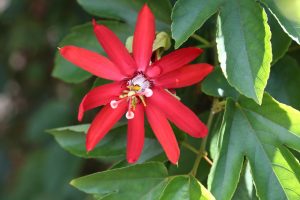
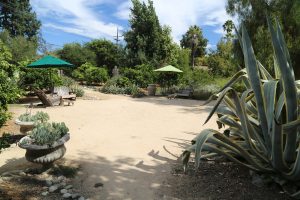
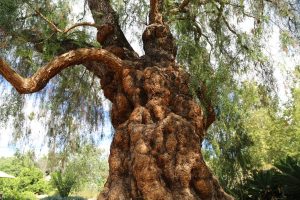
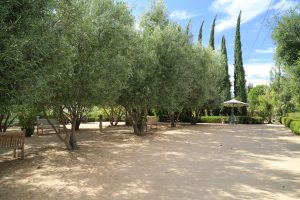
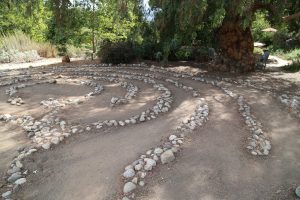

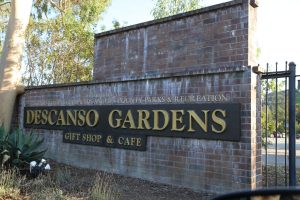
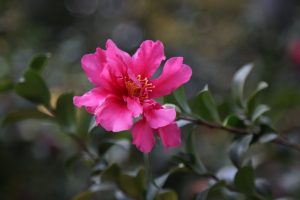
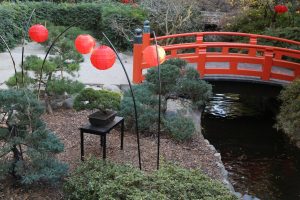
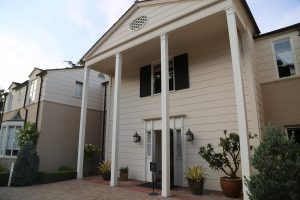
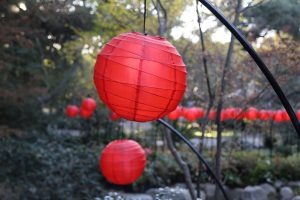


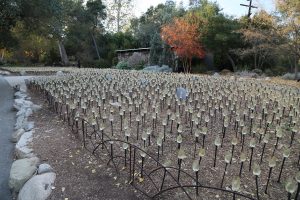
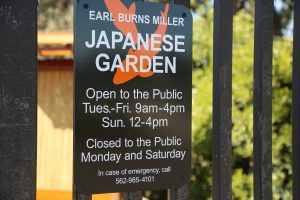

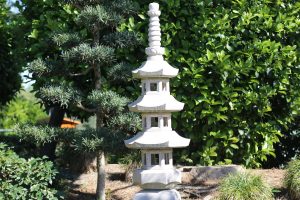
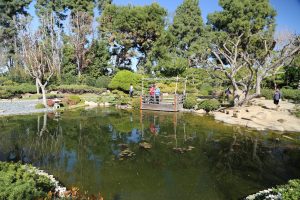

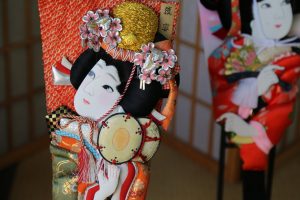
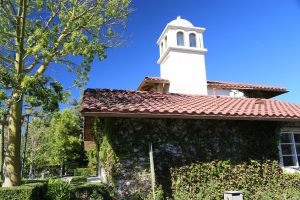
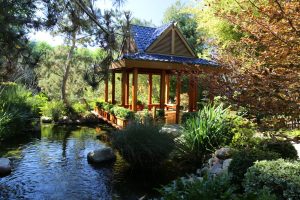
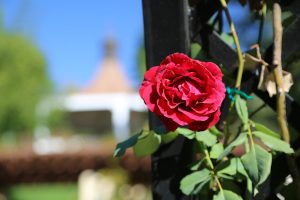
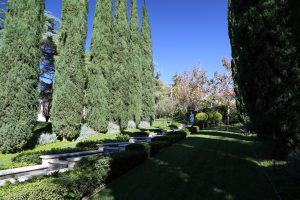
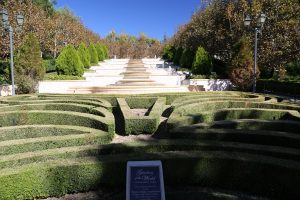
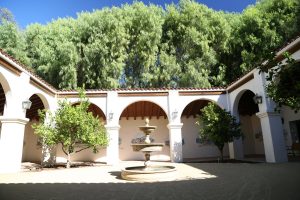
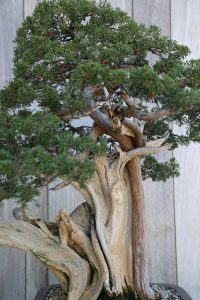
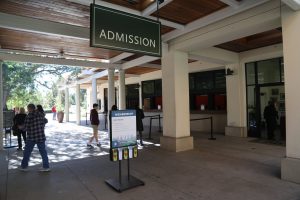
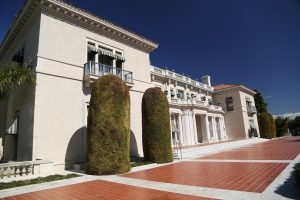
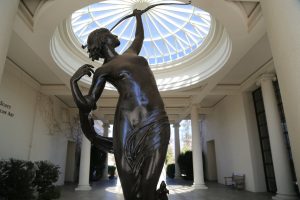
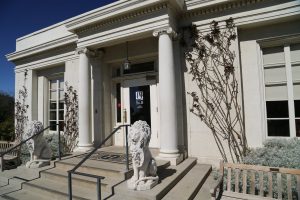
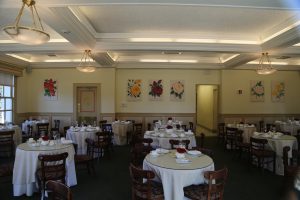
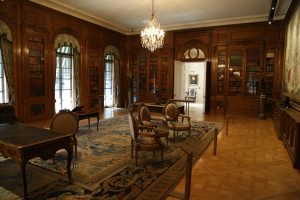
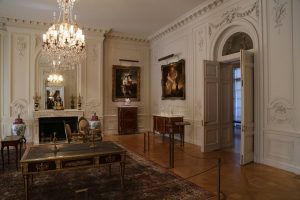
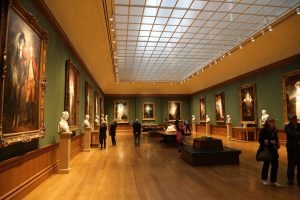
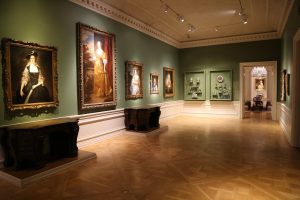
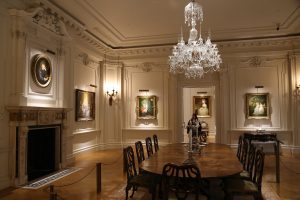
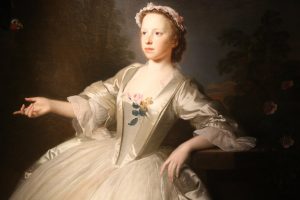
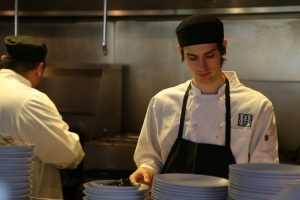
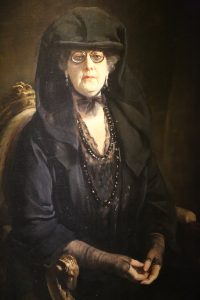

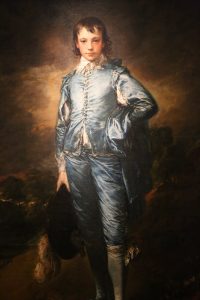
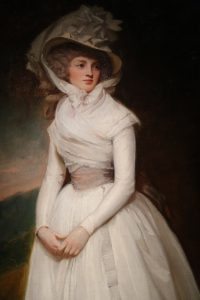
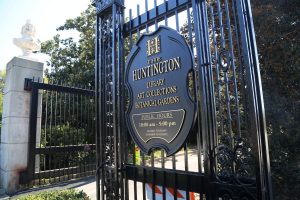
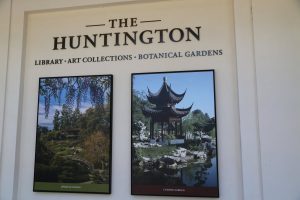
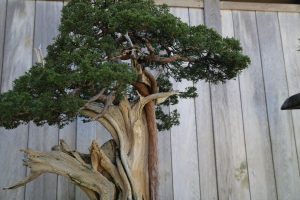
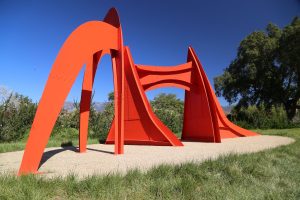
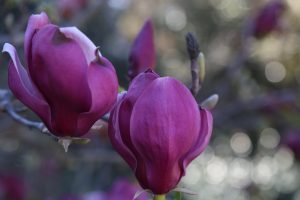
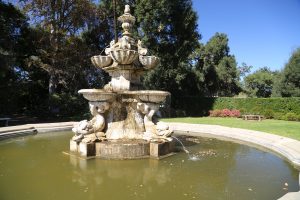
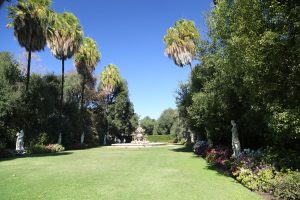
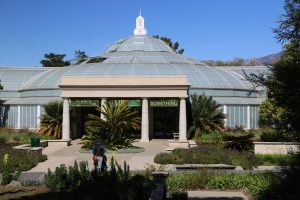
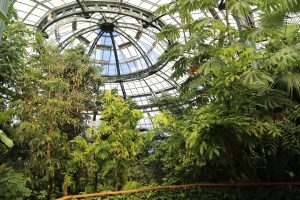
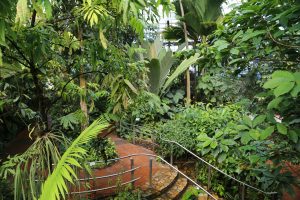
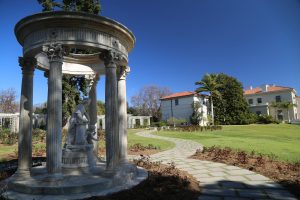
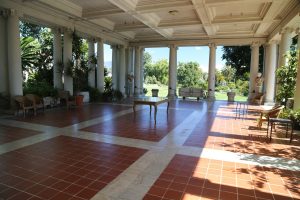
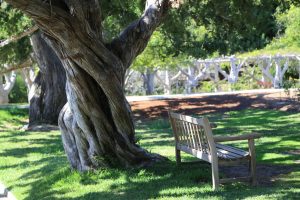
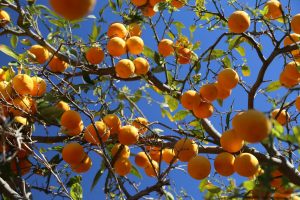
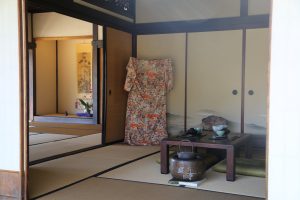
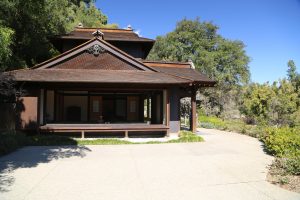
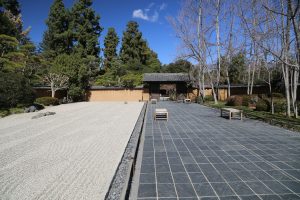
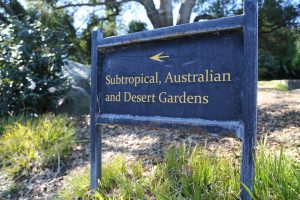
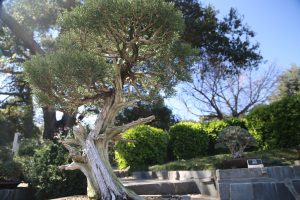
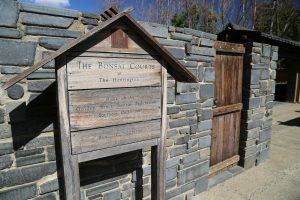
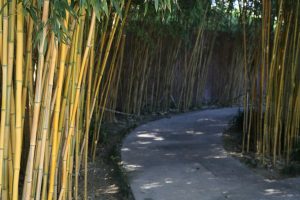
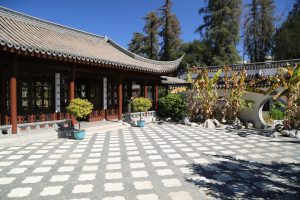
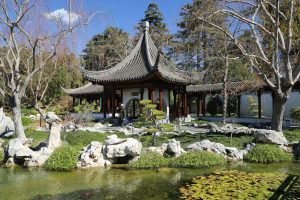
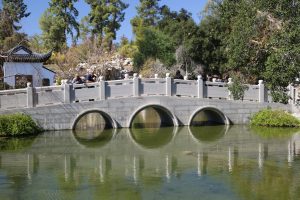

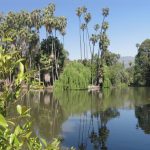

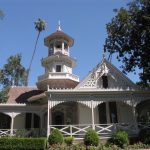


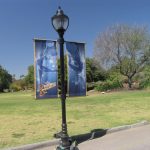
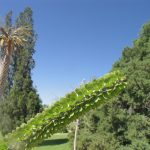
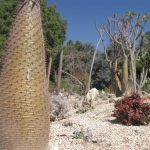

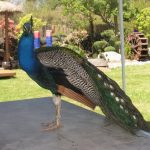
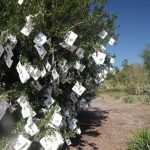

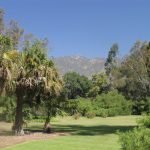
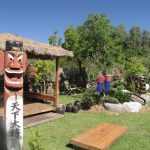
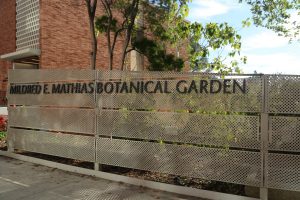
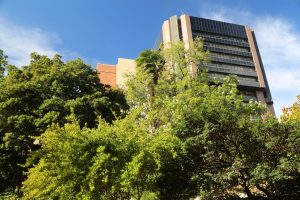
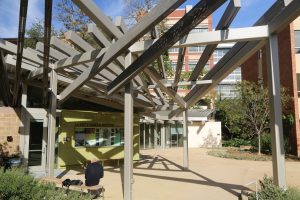
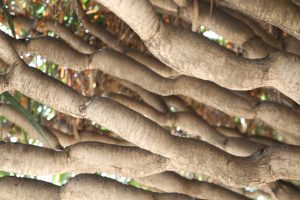
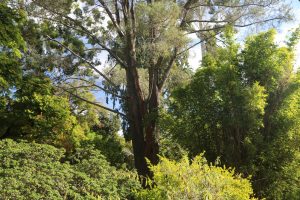
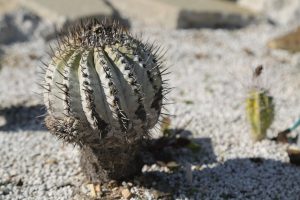
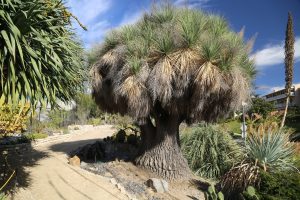
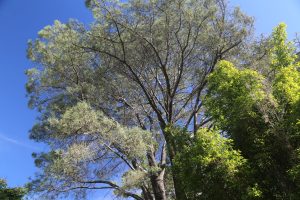
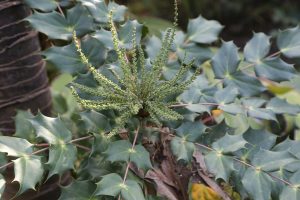
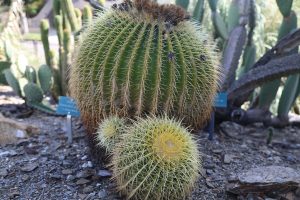
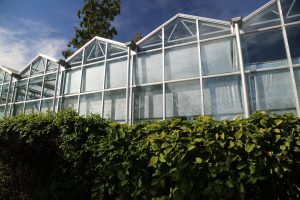
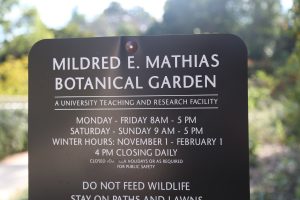
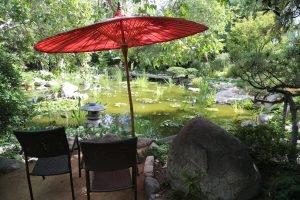
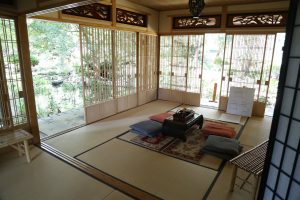





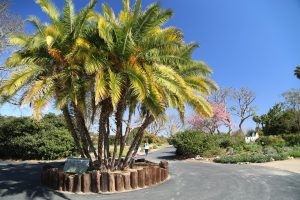

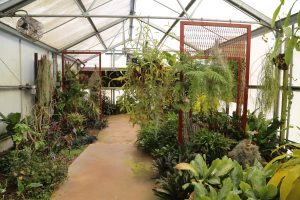

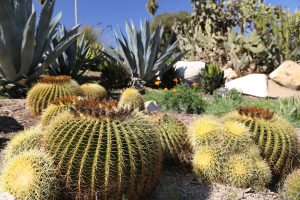

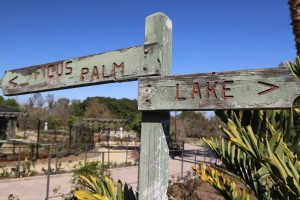

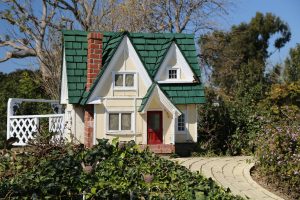

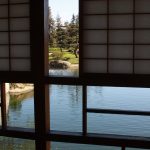
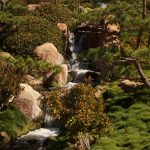
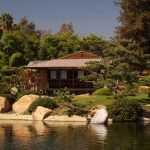

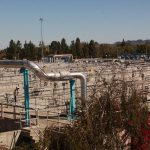
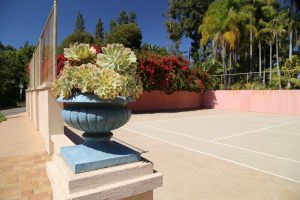
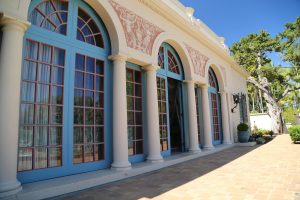
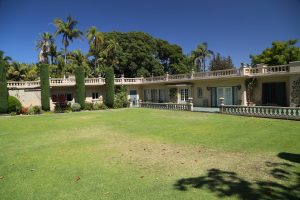
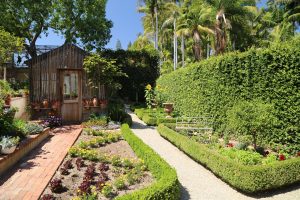
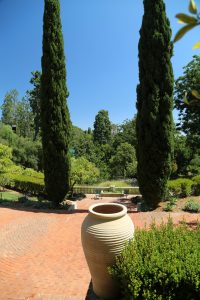

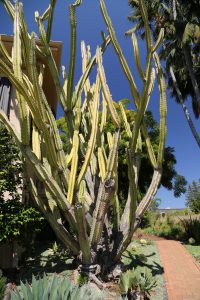
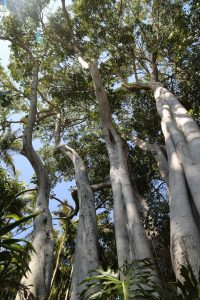

Leave a Reply